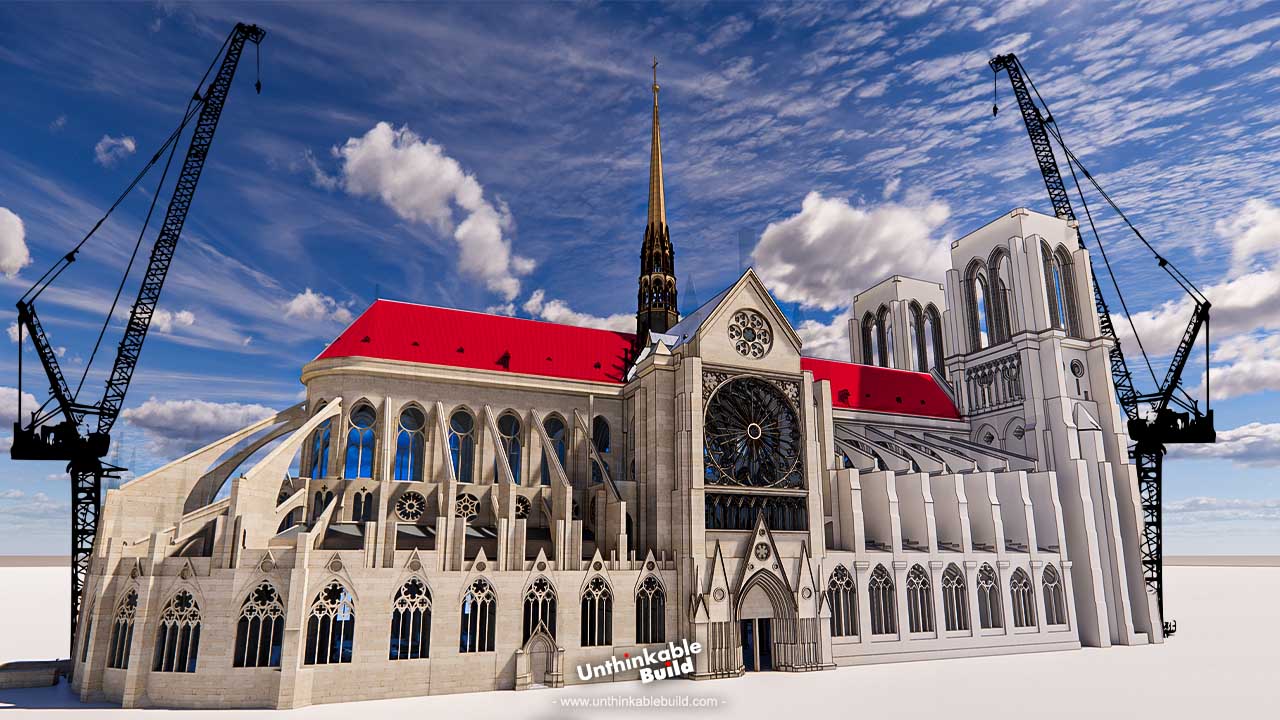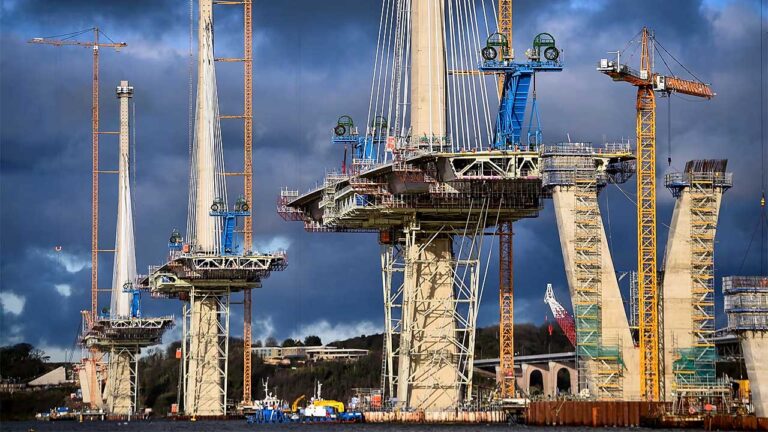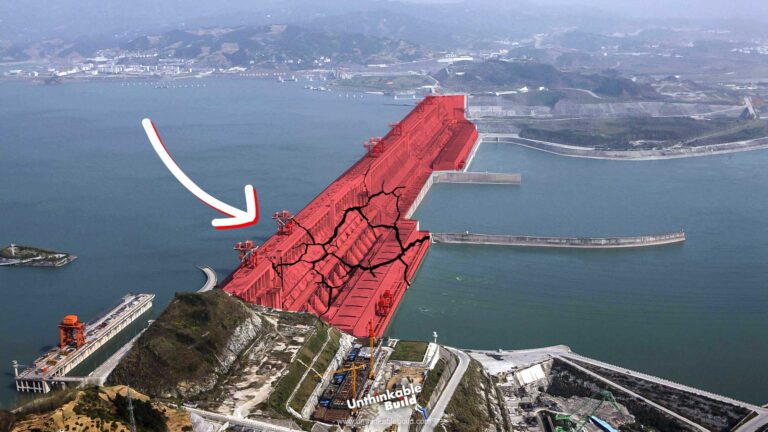Inside the Billion-Dollar Effort to Save Notre Dame Cathedral
Notre Dame de Paris is more than just a building; it’s a living testament to the artistry and incredible skills of the medieval era. Even today, with all our modern advancements, there’s something about its sophisticated details and timeless beauty that modern constructions just can’t quite capture. Notre Dame is a place where history feels alive, and the craftsmanship still takes your breath away.
On April 15, 2019, at 6:30 pm this masterpiece was engulfed in a devastating fire that brought the world to a standstill. The flames claimed the beloved spire and the centuries-old “forest” of oak beams that supported the lead roof of the Cathedral, a loss that felt deeply personal to many. It’s believed the fire was linked to the renovation work that was underway. Since that heartbreaking day, dedicated teams have been working tirelessly to restore this precious landmark, pouring their efforts into reviving a piece of history that holds so much meaning for so many.
For the past five years, the reconstruction and renovation of Notre Dame de Paris have been in full swing, with the aim of bringing it back to its former glory. Throughout this time, a dedicated team of experts, engineers, and artists have worked with incredible passion and commitment. Their efforts have turned into a story of its own—a remarkable and historic journey to restore a symbol of cultural and historical significance.
The goal to reopen Notre Dame de Paris before the Paris Olympics 2024 didn’t quite pan out, but there’s a good news—the cathedral is now set to welcome visitors again by December 2024. This is a big step forward in its journey of recovery. That said, bringing Notre Dame back to its full magnificence will take time. The damage from the fire five years ago was extensive, and repairing it involves a lot of detailed and careful work. So, while we’ll get to see the cathedral open to the public in late 2024, its complete restoration won’t be finished until 2028. It’s a long wait, but it is all part of the effort to honor and preserve this incredible piece of history.
Also Read: Restoration Update of Notre Dame Cathedral
Notre-Dame de Paris, often just called Notre-Dame, is an incredible medieval Catholic cathedral sitting right in the heart of Paris. It is one of the most remarkable examples of French Gothic architecture you’ll find. What sets Notre-Dame apart are its state-of-the-art design elements, like the ribbed vaults and flying buttresses, along with its splendid and colorful rose windows. The cathedral is also known for its detailed sculptural decorations. It is also notable for its three pipe organs, including a historic one, and its grand, resonant bells that have been a part of Paris’s soundscape for centuries.
Notre-Dame de Paris began its construction in 1163 under Bishop Maurice de Sully and its first brick was laid by Pope Alexander 3. The Cathedral was largely completed by 1260, though it continued to evolve over the centuries.
In the 12th century, architects started designing taller cathedrals with huge windows that let in an incredible amount of natural light. But with these grand designs came a challenge. The taller the building, the heavier the walls, which needed extra support. That’s when the flying buttress was invented. Medieval engineers came up with a clever solution as they connected the main walls to outside columns with angled beams and arches. This innovative design helped hold the walls up and distribute the building’s weight more evenly. Built in the 13th century, when this was an innovative idea, these flying buttresses are truly remarkable for their time.
Unfortunately, the cathedral suffered severe damage during the French Revolution in the 1790s, with much of its religious art made of bronze and lead were lost. The Cathedral later hosted grand events, including Napoleon’s coronation and the funerals of several French presidents. It was also a focal point for celebrating the Liberation of Paris in 1944.
After the Napoleonic Wars, Notre-Dame de Paris fell into such bad shape that there was talk of tearing it down. Victor Hugo, who loved the cathedral, wrote “The Hunchback of Notre-Dame” in 1831 to help save it. The novel brought much-needed attention to the cathedral’s plight. That same year, the cathedral’s sacristy was plundered by anti-Legitimists. In 1844, King Louis Philippe stepped in and ordered the restoration of Notre-Dame. He brought in Jean-Baptiste Lassus and architect Eugene Viollet-le-Duc, who had already made a name for themselves with the restoration of Sainte-Chapelle. Eugene replaced the spire that had been torn down, with an even taller one.
Unfortunately, on April 15, 2019, a devastating fire ravaged Notre-Dame de Paris and left the world in shock. People watched in heartbreak as the magnificent cathedral was consumed by flames, with its iconic spire reduced to ruins.
In response to the disaster, around USD $1 billion was raised for the cathedral’s restoration. Along with this considerable financial support and emotional response, a lively debate ensued about what the rebuilt Cathedral should look like. Some proposed an even taller spire, inspired by Viollet-le-Duc’s vision, while others suggested unconventional ideas like a unique swimming pool or a dramatic greenhouse.
During this time, numerous architects joined the discussion on how to adapt the cathedral for the 21st century, leading to the possibility of yet another transformation for Notre-Dame. It took time, but it was eventually decided that Notre-Dame should be rebuilt as closely as possible to its original state.
Restoring an 850 year old cathedral in the 2020s was a monumental task. Working on a historic landmark of France in a busy city with global attention and a deadline for the Paris 2024 Olympics presented significant challenges. Even the original stones used in the Cathedral were no longer available, and stabilizing the building took two years. The crucial yet fragile flying buttresses also required delicate repair to prevent collapse.
After the fire, melted scaffolding needed careful removal. A temporary steel structure was built to help in this process, and specially trained technicians abseiled down to cut and collect the debris.
Reconstruction of the spire began with a new base crafted in northwestern France, where 40 carpenters assembled and tested the base before transporting it to Paris. The spire rose nearly 100 meters high, using almost a thousand trees that were 200 years old. The restored spire was crowned with a golden rooster reimagined as a phoenix, symbolizing rebirth.
The fire also damaged stained-glass windows of Notre-Dame, which were either cleaned or replaced, with some donated from Cologne Cathedral. The cathedral’s 8,000-pipe organ, covered in lead dust, was meticulously cleaned and reassembled.
The restoration of this timeless beauty is set to unfold over the coming years, with exciting milestones on the horizon. By December 2024, Notre Dame de Paris is expected to welcome visitors again, though not in its entirety.
Also Read: Unbelievable Restoration of Notre Dame Cathedral in Paris
The journey doesn’t end there. Full restoration of the Cathedral is projected to be completed by 2028. This timeline allows for ensuring that the cathedral’s interior and structural elements are fully revived. The extended timeframe reflects the commitment to preserving Notre-Dame’s rich history while incorporating modern updates. It’s a testament to the care and commitment needed to bring this iconic landmark back to its former glory that began in 1844.
We’re excited to keep you informed about this project, just like we’ve done before. Make sure to subscribe to our channel so you don’t miss any updates. We really appreciate your thoughts, so drop a comment for this video and let us know what you think. Please share it with your friends and loved ones.







